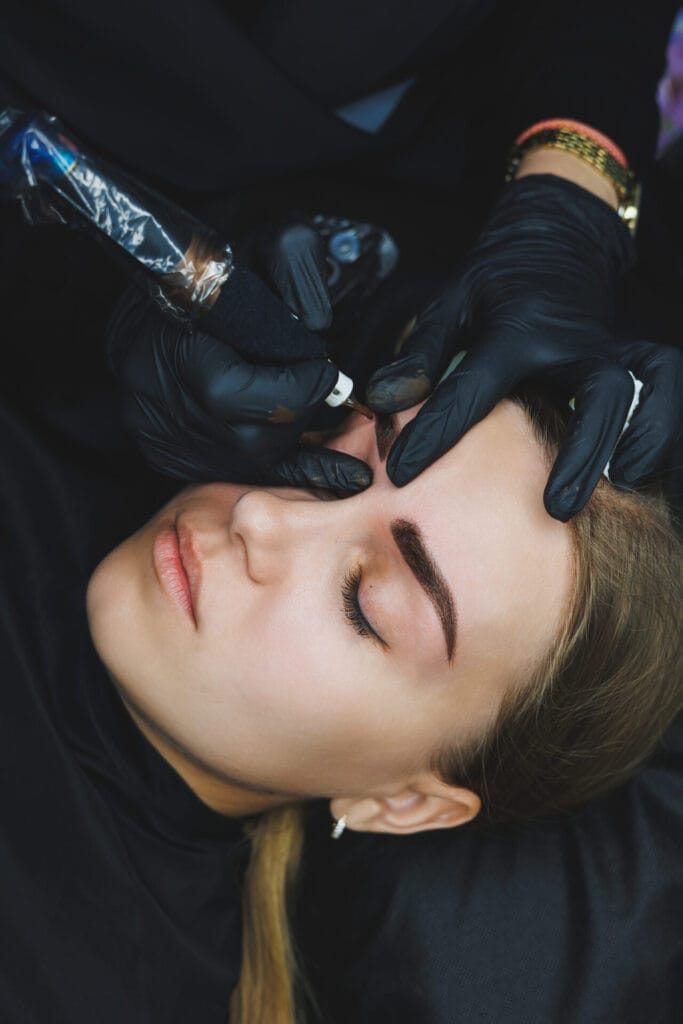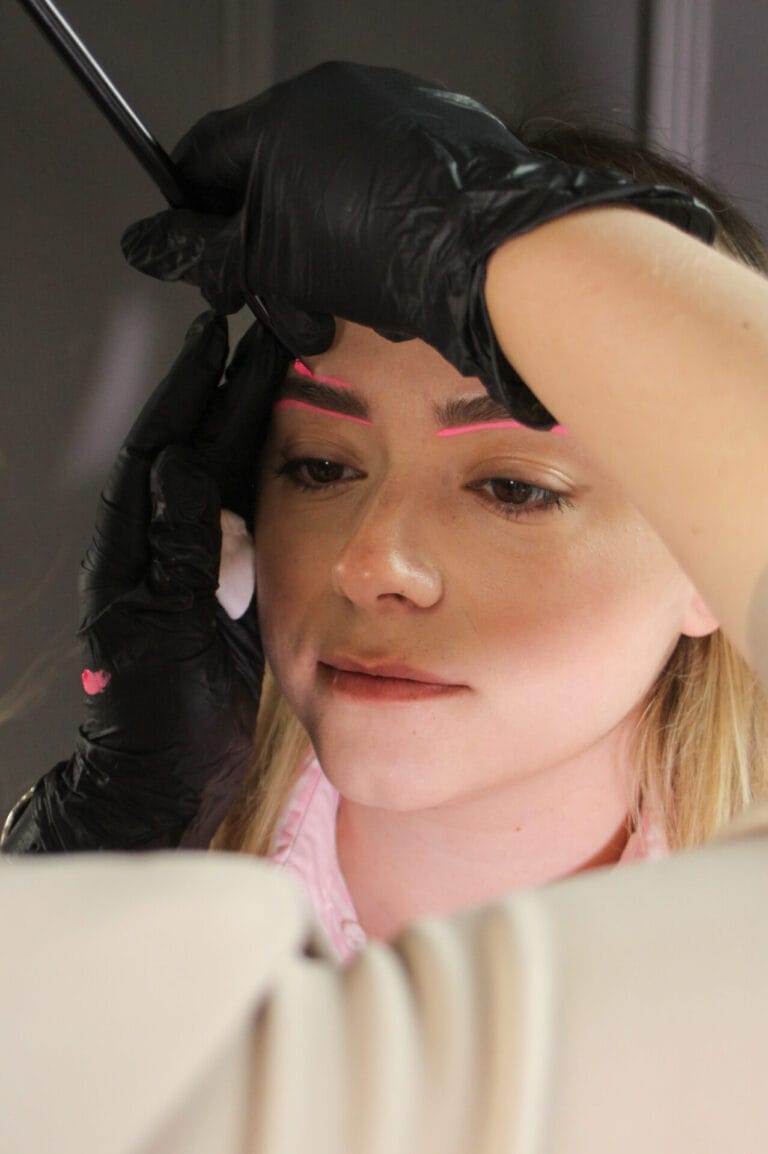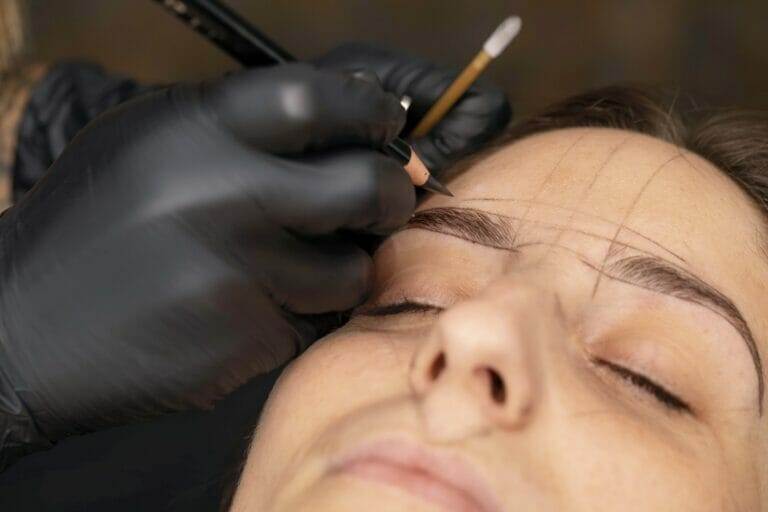Introduction to Microblading
What is Microblading and how does it work?
Microblading is a semi-permanent eyebrow enhancement procedure that uses a manual hand tool with a row of fine needles to create hair-like strokes and implant pigment into the skin. It is a form of tattooing that enhances the eyebrows by filling in sparse areas and creating a more defined shape.
During the process, the microblading technician carefully etches individual hair strokes into the top layer of the skin, mimicking the look of natural eyebrow hairs. This technique allows for precise control and customization, resulting in natural-looking and realistic eyebrows. The pigment used in microblading is matched to the client’s hair color and skin tone, ensuring a seamless blend.
The benefits and advantages of Microblading
Microblading offers several benefits and advantages, making it a popular choice for those looking to enhance their eyebrows:
- Natural-looking results: The fine hair strokes created during microblading mimic the appearance of real eyebrows, resulting in a natural and realistic look.
- Time-saving: With microblading, there is no need to spend time filling in brows every day. The enhanced eyebrows will stay intact for up to two years, saving time and effort in the daily makeup routine.
- Long-lasting: Unlike traditional eyebrow makeup, which can smudge or fade throughout the day, microbladed eyebrows are semi-permanent and can last up to two years with proper care.
- Customization: The shape, thickness, and arch of the eyebrows can be customized according to individual preferences and facial features, ensuring a tailored look.
- Improved confidence: Microblading can help boost self-esteem and confidence by providing a defined and fuller eyebrow appearance, particularly for individuals with thin or sparse eyebrows.
In conclusion, microblading is a popular and effective technique for enhancing eyebrows. Its natural-looking results, time-saving aspect, long-lasting effect, and customization options make it a preferred choice for individuals looking for a hassle-free way to achieve their desired eyebrow shape and fullness.
Preparing for Your Microblading Appointment
Consultation with the technician
Before your microblading appointment, it is important to schedule a consultation with the technician. During this consultation, the technician will assess your eyebrows and discuss your desired outcome. They will also explain the microblading process, answer any questions you may have, and provide recommendations based on your facial features and skin tone.
Before your appointment: What to do and what to avoid
Prior to your microblading appointment, there are a few things you should do and avoid to ensure the best results:
- Do your research: Take the time to research different microblading technicians in your area and read reviews to find a reputable and experienced professional.
- Avoid excessive sun exposure: It is recommended to avoid excessive sun exposure, tanning beds, and sunburns at least two weeks before your appointment. Sunburned or damaged skin can affect the healing process and the results of microblading.
- Avoid blood-thinning medications: Certain medications and supplements, such as aspirin, ibuprofen, and fish oil, can thin the blood and increase the risk of bleeding during the procedure. It is advisable to avoid these medications for at least one week prior to your appointment.
- Don’t pluck or wax your eyebrows: It is important to avoid tweezing, waxing, or threading your eyebrows at least one week before your appointment. These methods can remove the hairs that will be used as a guide during the microblading process.
- Clean your skin: On the day of your appointment, make sure to cleanse your face thoroughly and remove any makeup or skincare products from the eyebrow area.
By following these guidelines and preparing for your microblading appointment, you can ensure a smooth and successful procedure. Remember to communicate openly with your technician and follow their aftercare instructions to achieve the best results.
The Microblading Procedure
Step-by-step guide to the Microblading process
The microblading process involves several steps to achieve the desired result:
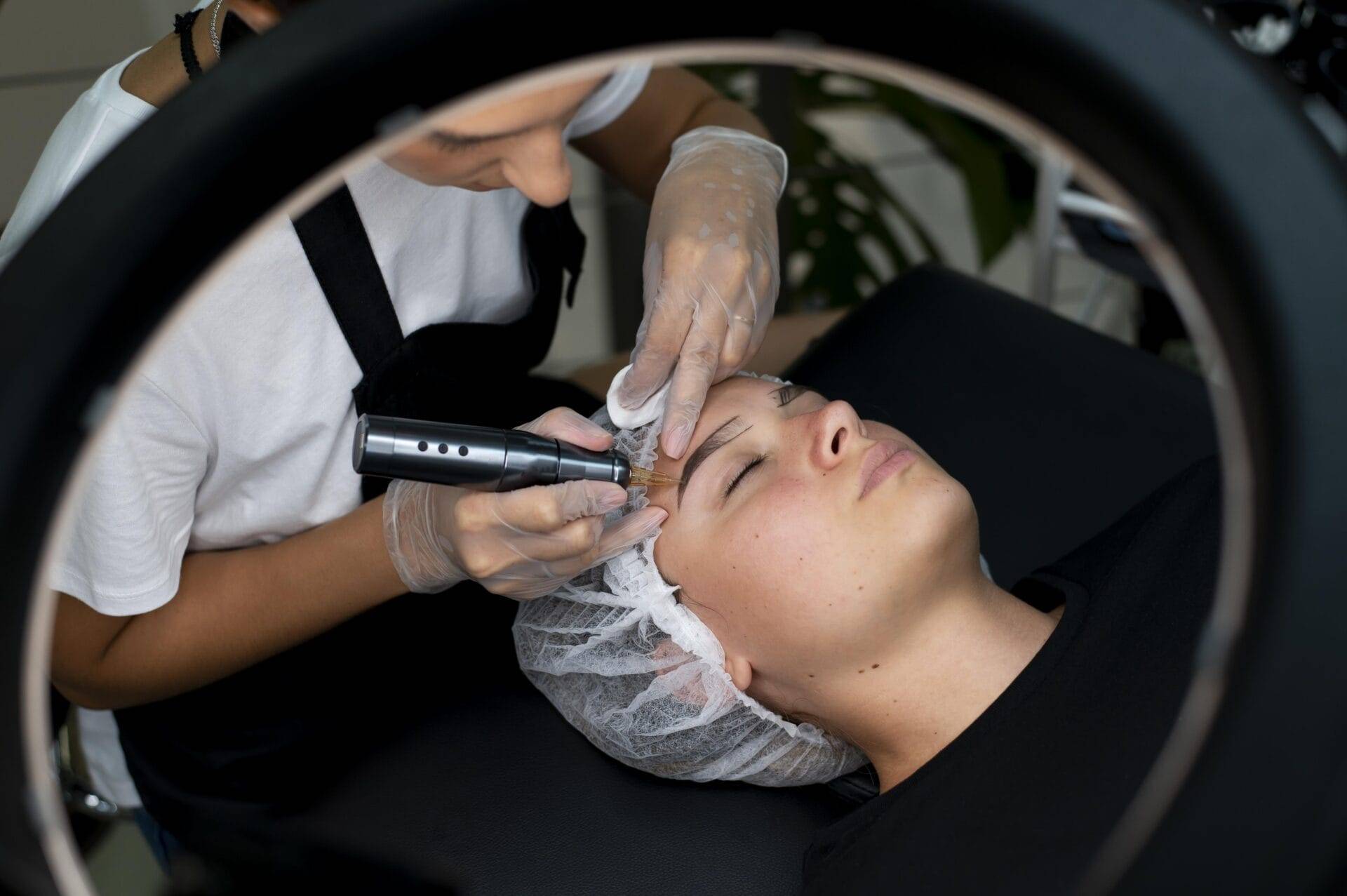
- Preparing the eyebrows: The technician will clean the eyebrow area and apply a numbing cream to minimize any discomfort during the procedure.
- Mapping the eyebrows: The technician will use precise measurements and eyebrow mapping techniques to outline the shape and symmetry of the eyebrows. This ensures a natural and complementary look for your facial features.
- Choosing the pigment: A consultation will be done to select the most suitable pigment color that matches your natural hair color and skin tone.
- Creating the strokes: Using a handheld microblade tool, the technician will make tiny incisions in the skin, mimicking natural eyebrow hairs. This step involves following the mapped-out shape and direction of your eyebrows, creating fine, hair-like strokes.
- Applying the pigment: After creating the strokes, the technician will apply pigment to the incisions, allowing it to seep into the skin for the desired color and definition.
- Final touches: Once the pigment is applied, the technician will assess the eyebrows and make any necessary adjustments, ensuring symmetry and well-defined eyebrows.
Understanding the different types of Microblading strokes
Microblading strokes can be customized to achieve different looks and styles. Here are some common types of microblading strokes:
| Stroke | Description |
|---|---|
| Hair-like strokes | These strokes mimic the appearance of natural eyebrow hairs, creating a soft and realistic look. |
| Feathery strokes | Feathery strokes are lighter and softer, creating a more natural and subtle effect. |
| Combination strokes | Combination strokes combine different techniques, such as hair-like and feathery strokes, to create a fuller and more defined brow. |
Understanding the different types of strokes can help you effectively communicate your desired outcome to the technician during your consultation.
Aftercare Tips and Guidelines
Post-treatment care instructions
After the microblading procedure, it is crucial to follow specific aftercare instructions to ensure proper healing and long-lasting results. Here are some guidelines to keep in mind:
- Avoid getting the eyebrows wet for the first 7-10 days after the procedure.
- Apply the recommended ointment or cream provided by the technician to keep the eyebrows moisturized.
- Avoid touching or scratching the treated area to prevent infection and pigment loss.
- Avoid exposure to direct sunlight and tanning beds.
- Avoid applying makeup or other products on the eyebrows during the initial healing period.
- Do not pick at any scabs or flakes that may form during the healing process.
How to properly clean and care for your new eyebrows
To maintain the appearance and longevity of your new eyebrows, it is essential to keep them clean and well-cared for. Here’s how:
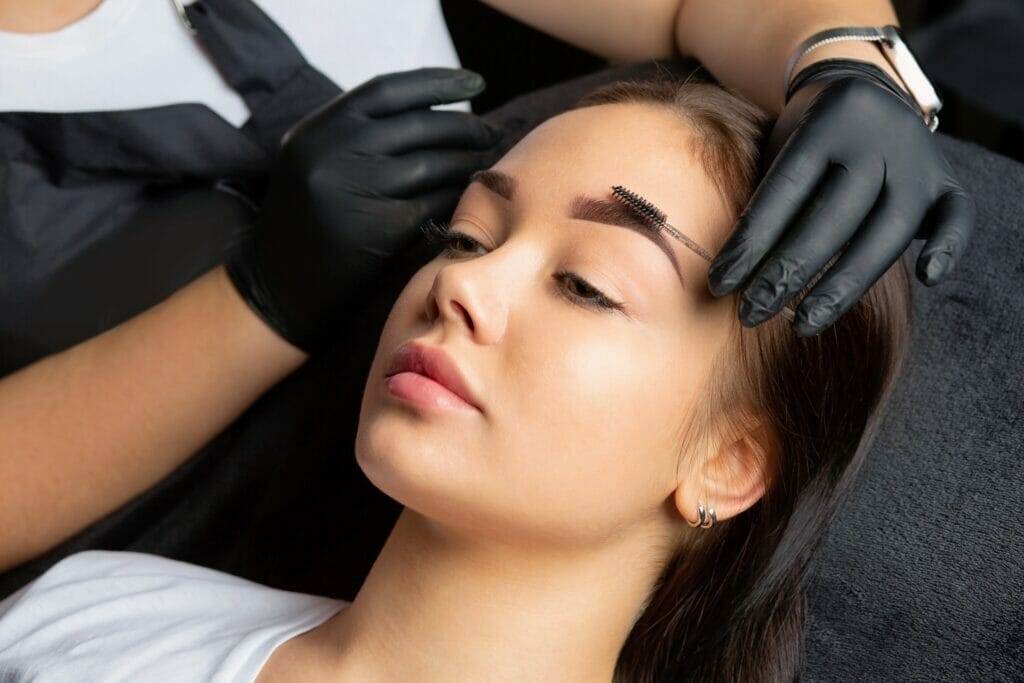
- Gently clean the eyebrows using a mild, alcohol-free cleanser and a soft cloth or cotton pad.
- Pat the eyebrows dry with a clean towel or tissue.
- Apply a thin layer of the recommended aftercare ointment or cream to moisturize the eyebrows after cleaning.
- Avoid scrubbing or rubbing the eyebrows harshly while cleaning as it can cause pigments to fade.
By following these aftercare tips and guidelines, you can ensure the best possible outcome for your microbladed eyebrows. Consult with your technician for any specific instructions tailored to your situation.
Healing Process and Results
What to expect during the healing process
After the microblading procedure, it is important to understand the healing process to manage your expectations and ensure the best results. Here are some things to expect during the healing process:
- Mild redness and swelling: It is normal to experience some redness and swelling in the treated area immediately after the procedure. This typically subsides within a few hours or days.
- Tenderness and itching: The eyebrows may feel tender and itchy during the healing process. It is important to resist the urge to scratch or pick at the treated area to prevent damage.
- Formation of scabs: As the incisions heal, scabs may form over the microbladed strokes. It is crucial not to pick at these scabs, as they protect the healing skin underneath.
- Color fading and settling: The initial color of the microbladed eyebrows may appear darker and more intense than the desired outcome. As the skin heals, the color will fade and settle into a more natural shade.
- Final results: The full healing process typically takes 4-6 weeks, during which time the eyebrows will undergo various stages of healing. The final results can be seen once the skin fully regenerates.
Common side effects and how to manage them
While microblading is generally a safe and well-tolerated procedure, there are some common side effects that may occur. Here are some tips on how to manage them:
- Itching: If you experience itching, avoid scratching the treated area. Applying a cold compress or using an anti-itch cream can provide relief.
- Dryness: To combat dryness, apply the recommended aftercare ointment or cream to keep the eyebrows moisturized. Avoid using products that contain harsh chemicals or fragrances.
- Color fading: It is normal for the color of the microbladed eyebrows to fade during the healing process. To maintain the desired color, follow the aftercare instructions provided by your technician.
- Pigment loss: In some cases, minor pigment loss may occur during the healing process. This can be addressed during a touch-up appointment with your technician.
- Infection: To prevent infection, keep the treated area clean and avoid touching it with dirty hands. If you notice any signs of infection, such as increased redness, swelling, or discharge, consult your technician or a healthcare professional.
By understanding the healing process and knowing how to manage common side effects, you can ensure a successful microblading experience and achieve long-lasting results.



